Explore the timeline below to learn more about Otterbein’s history in connection to key moments in world history and the history of the United States. To read more about Otterbein’s 175 years of excellence, opportunity, and community, check out the Commemorative issue of Towers Online.
1800 – 1859
1800
First Christian denomination founded in America becomes Church of the United Brethren in Christ, led by Philip William Otterbein.
1803
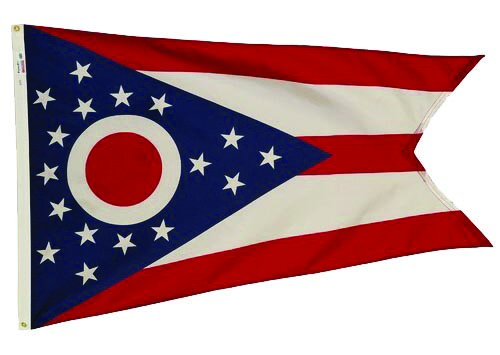
OHIO BECOMES THE 17th STATE.
1847
Otterbein is founded as co-educational and open to students of all races and creeds. Women served on the faculty from the founding.
1847
Thomas Edison and Alexander Graham Bell are born.
1855
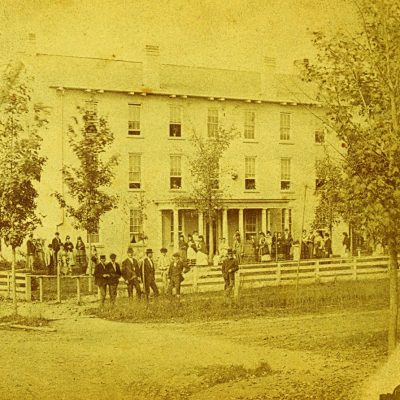
Saum Hall, the first building constructed by the University, is completed. It remained in use until 1969.
1857
In 1857, Otterbein’s first class graduates, consisting of Sarah Jennie Miller and Mary Katherine Winter (later Hanby).
1857
Dred Scott case rules that descendants of slaves are not U.S. citizens.
1858
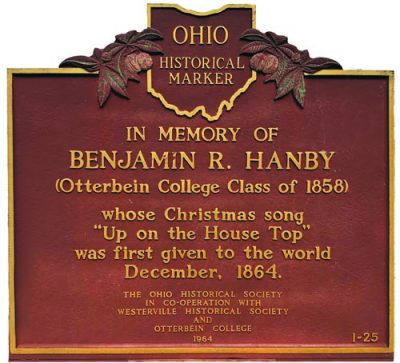
In 1858, Benjamin Russell Hanby, composer of Darling Nelly Gray and Up on the Housetop, graduates.
1859
In 1859, William Hannibal Thomas, Otterbein’s first Black student, enrolls— though he leaves after one term.
1860 – 1889
1861
The Civil War begins.
1861
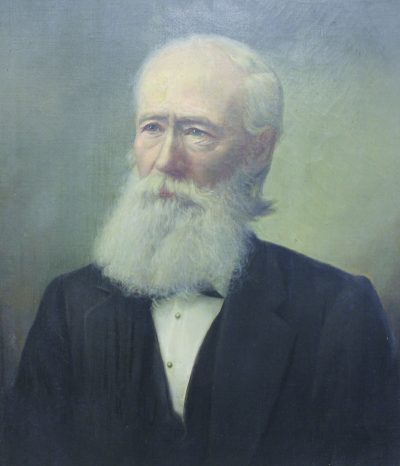
In 1861, students and faculty, including science professor Dr. Thomas McFadden (at top), leave Otterbein to serve in the Union Army during the Civil War.
1870
The 15th Amendment provides voting rights for men of color.
1872
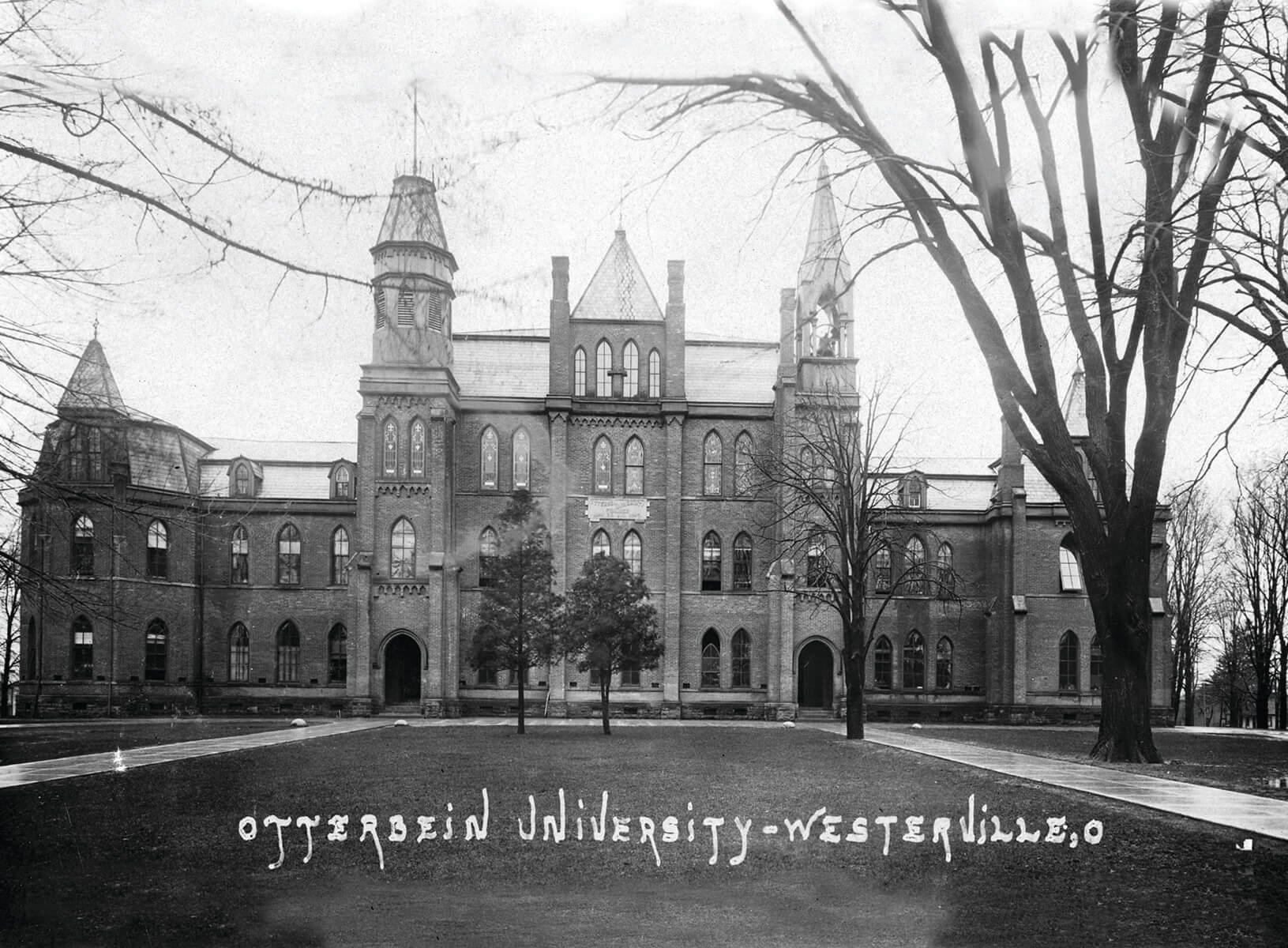
In 1872, the new Main Building is dedicated. It was officially renamed Towers Hall in 1956, although students had unofficially called it “Towers” for decades
1879
EDISON INVENTS THE LIGHT BULB.
1882

Otterbein baseball team defeats The Ohio State University, 10-8. The team was disbanded due to faculty concerns.
1882
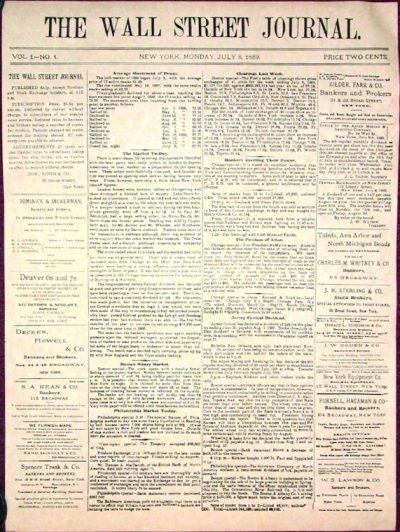
The Wall Street Journal is founded
1890 – 1909
1890
In 1890, Otterbein football team defeats The Ohio State University, First Founders Day celebration. 42-6
1890
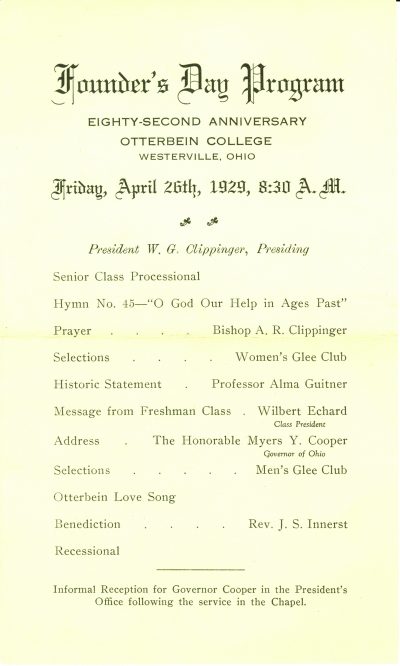
First Founders Day celebration.
1891
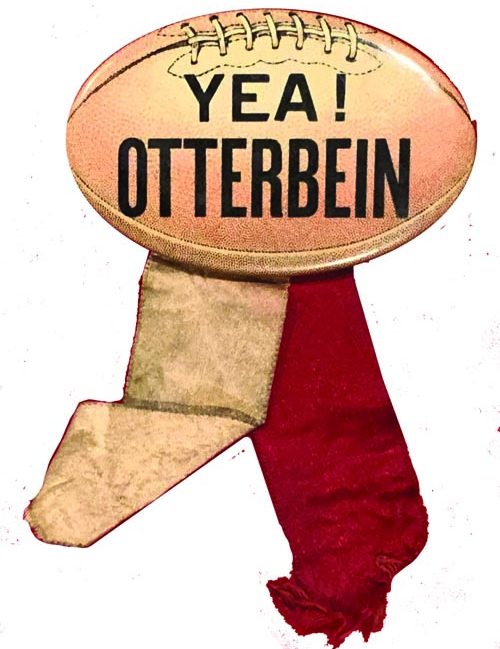
In 1891, tan and cardinal are chosen as Otterbein’s colors.
1893
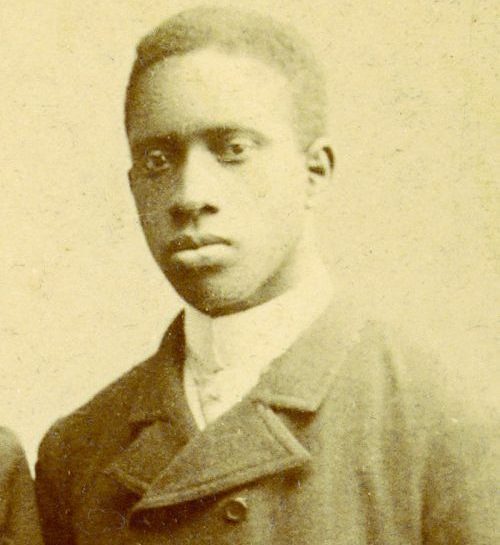
In 1893, William Henry Fouse becomes the first Black student to graduate from Otterbein.
1897
Otterbein’s 50th anniversary.
1900
The Board of Trustees considers moving Otterbein to Dayton. Concerned citizens of Westerville raised money to make the major improvements necessary to persuade the board to stay. By 1906, these improvements included two new telephone exchanges, a natural gas line, waterworks, sanitary sewers, and paved streets.
1900
Basketball becomes the first women’s athletic team at Otterbein.
1901
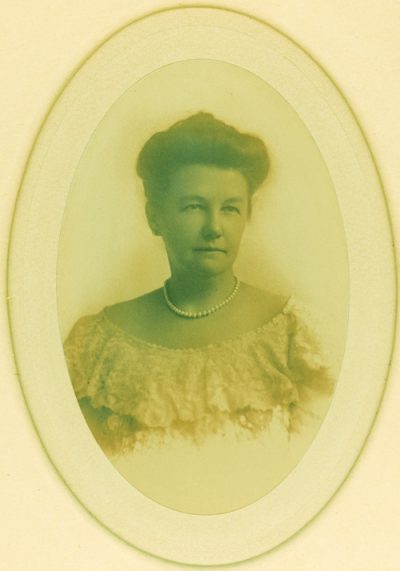
Mrs. Sarah B. Cochran donates $25,000 for the construction of Cochran Hall, on the condition that Otterbein pays off all of its existing debt in the amount of $65,000.
1903
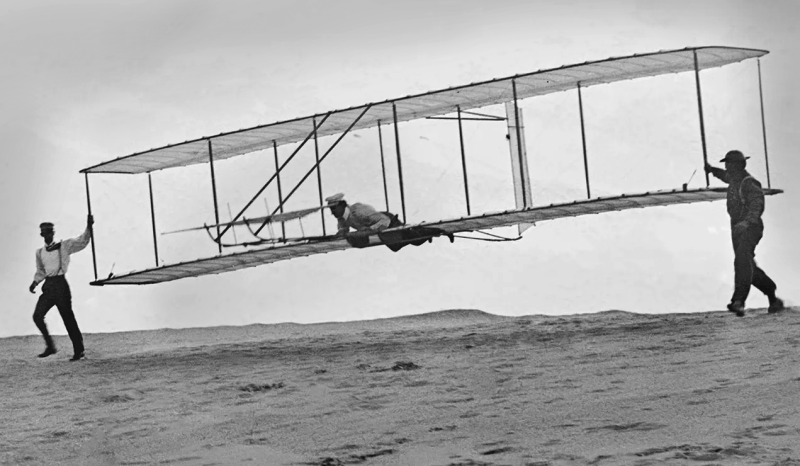
Wright brothers’ first airplane flight.
1907
Otterbein stages its first theatrical production, Shakespeare’s As You Like It.
1907
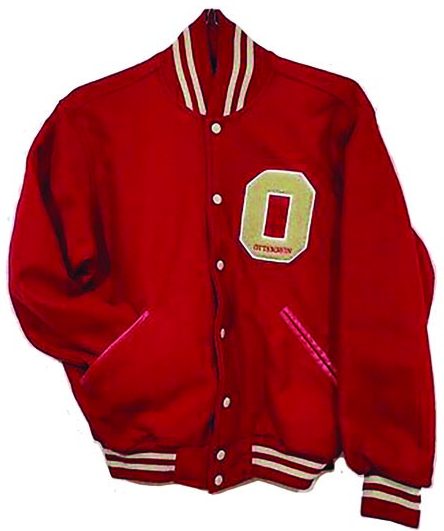
In 1907, the first varsity letters are awarded in football, basketball, 1907 baseball, and track.
1907
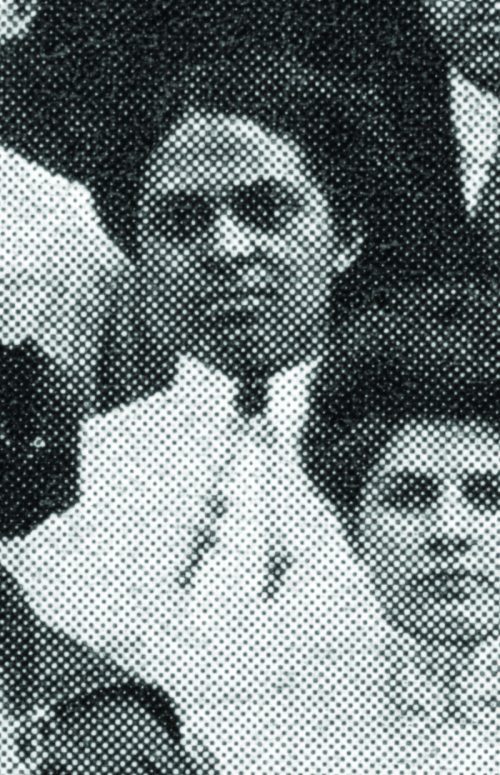
Esther Kirksey, Otterbein’s first female Black student, enrolls.
1908
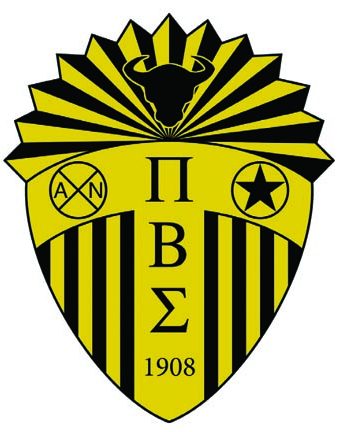
Pi Beta Sigma and Pi Kappa Phi, Otterbein’s first fraternities, are founded
1909
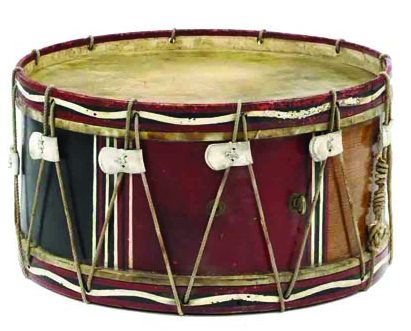
In 1909, Otterbein Band performs its first marching show.
1909
The Anti-Saloon League moves to Westerville.
1910 – 1919
1910
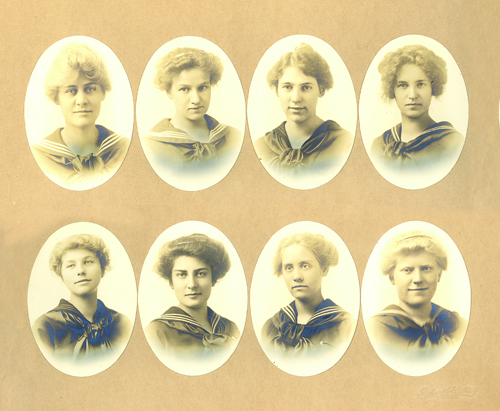
In 1910, Sigma Alpha Tau, Otterbein’s first sorority, is founded.
1911
Class of 1911 commits $2,000 for new athletic fields, which opened in 1914.
1912
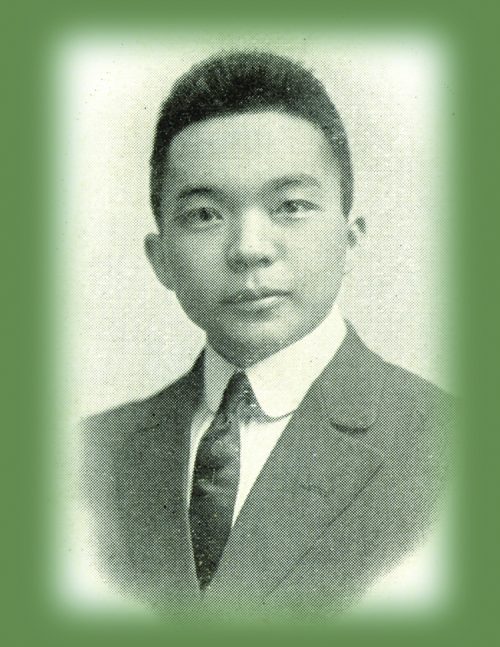
Kiyoshi Yabe, Otterbein’s first Japanese student, graduates in 1912.
1915
The first Scrap Day competitions take place between freshmen and sophomores, including a tug-of-war across Alum Creek.
1917
Otterbein University becomes Otterbein College.
1917
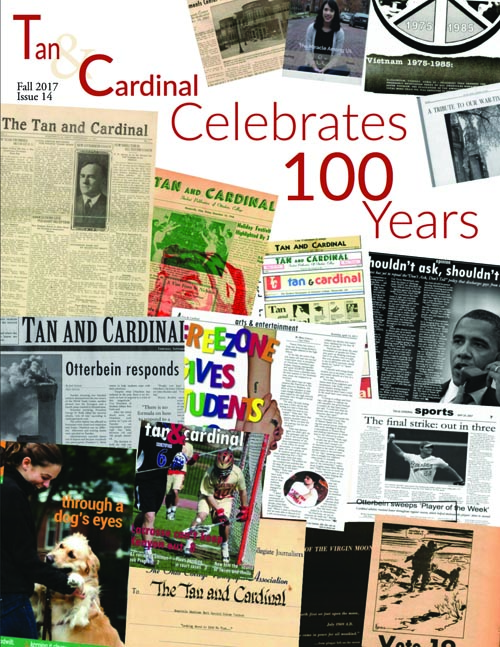
Tan and Cardinal publishes its first issue.
1917
Daylight saving time is created.
The United States enters WWI; women take on more roles on campus.
1918
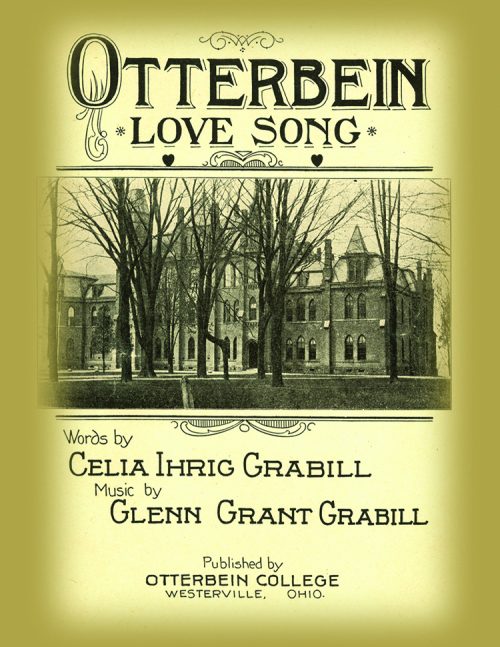
Otterbein Love Song is written by music professor Glenn Grant Grabill and his wife, Celia, both Class of 1900. It is quickly adopted as Otterbein’s alma mater
1918
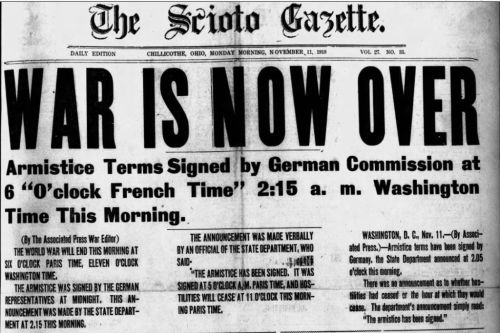
WWI ENDS
1919
McFadden Science Hall is dedicated in 1919.
1919
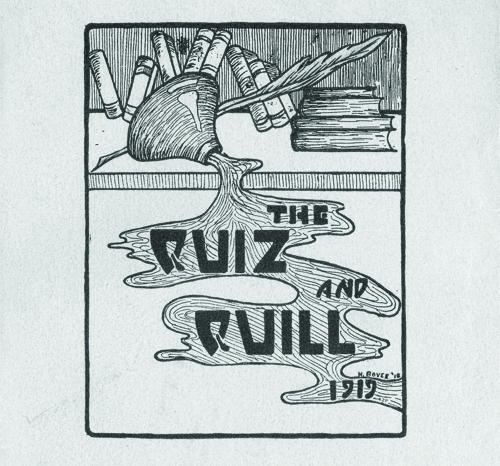
Quiz and Quill publishes its first issue in 1919
1919
Prohibition begins in 1919.
1920 – 1929
1920
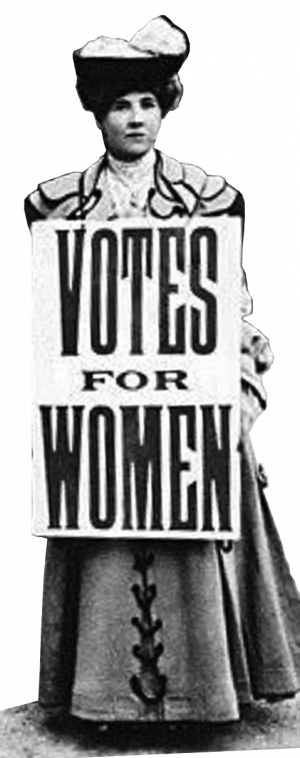
19TH AMENDMENT GIVES WOMEN THE RIGHT TO VOTE
1921
In 1921, Otterbein Student Council forms, giving students a degree of self-governance.
1921
Otterbein Women’s Club of Columbus and Vicinity is formed. Name changed to Westerville Otterbein Women’s Club in 1951.
1922
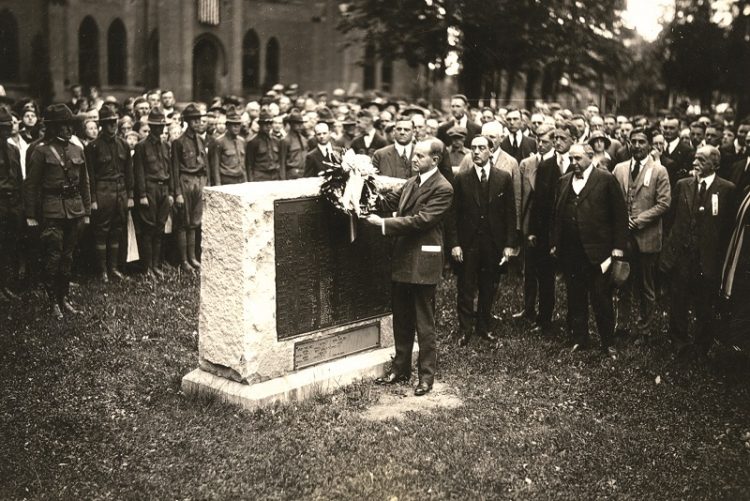
Otterbein celebrates the 75th anniversary of its founding with a campaign to raise $2,000,000, a visit from Vice President Calvin Coolidge, and an outdoor pageant called The Spirit of Otterbein.
1924
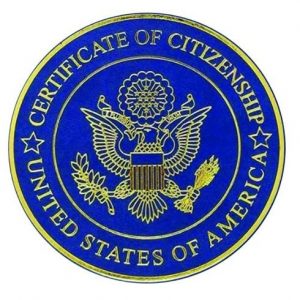
NATIVE AMERICANS RECEIVE U.S. CITIZENSHIP.
1924
In 1924, President Clippinger begins the tradition of new student orientation.
1925
Dr. Frank O. Clements, class of 1898, is elected chair of the Board of Trustees. He and his wife, Vida, established a strong tradition of transformational philanthropy to Otterbein.
1926
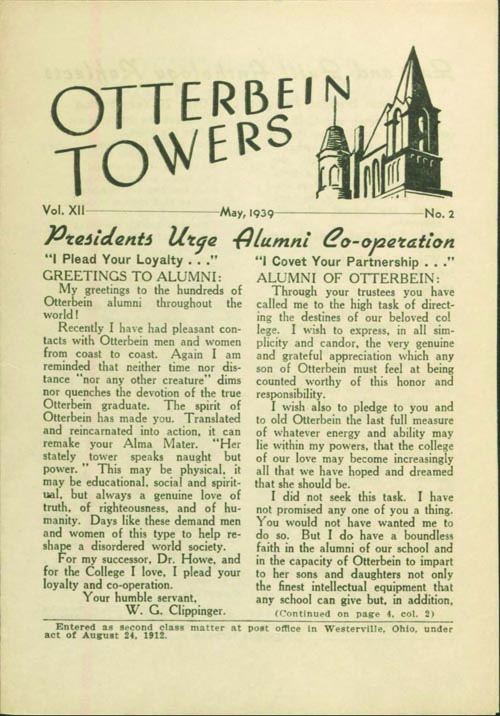
In 1926, Otterbein alumni magazine begins. The magazine was later named Towers in 1939.
1926
VARSITY LETTERS FOR WOMEN ATHLETES ARE AWARDED.
1928
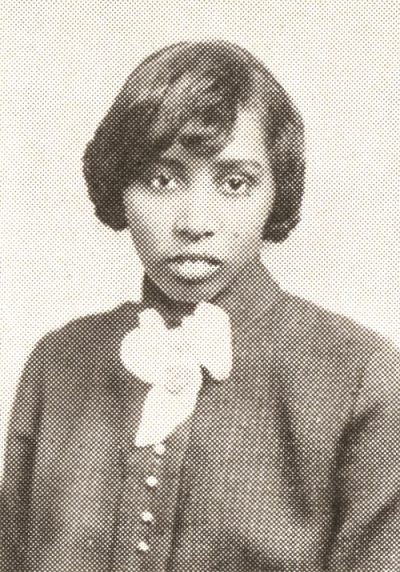
Viola Burke becomes Otterbein’s first female Black graduate, earning her bachelor’s degree in music.
1929
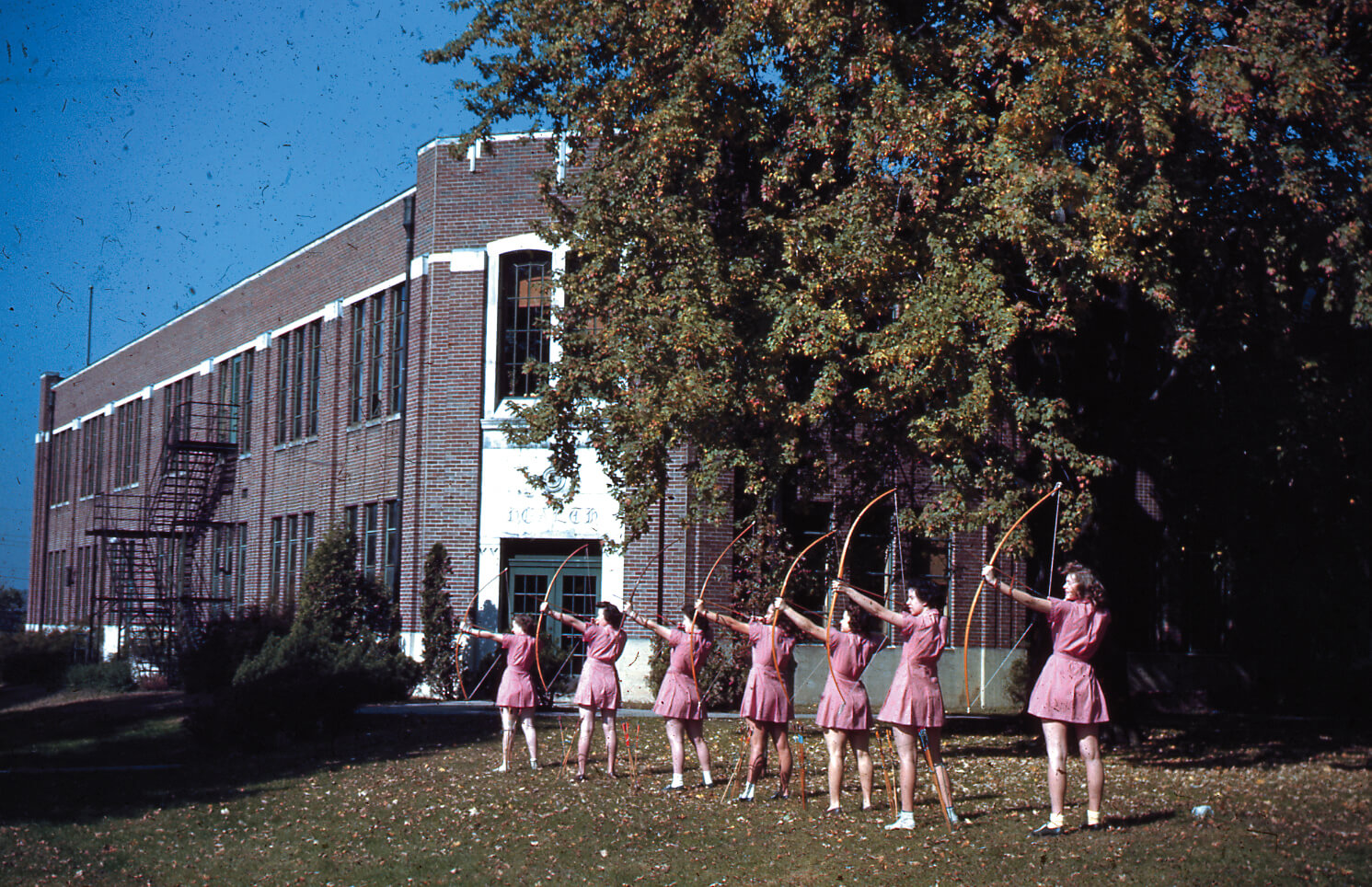
Alumni Gymnasium opens. The building is now the Battelle Fine Arts Center, home of the Department of Music.
1929
STOCK MARKET CRASH OF 1929 MARKS THE START OF THE GREAT DEPRESSION.
1930 – 1944
1931
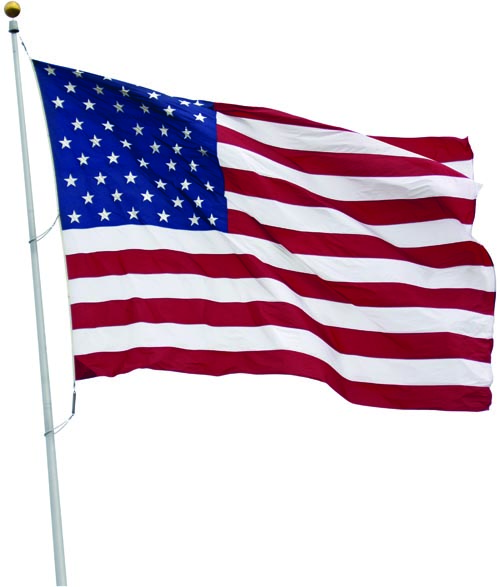
In 1931, The Star-Spangled Banner becomes America’s national anthem.
1932
Otterbein’s fraternities and sororities are officially recognized and allowed to use Greek names and letters in public, rather than operate as underground organizations.
1932
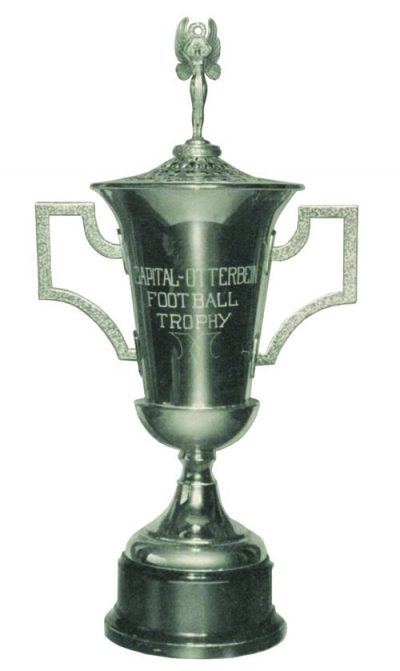
The first Cap-Otter trophy is purchased, in 1932, to celebrate the athletic rivalry between Capital University and Otterbein.
1934
Work Study program is established on campus.
1939
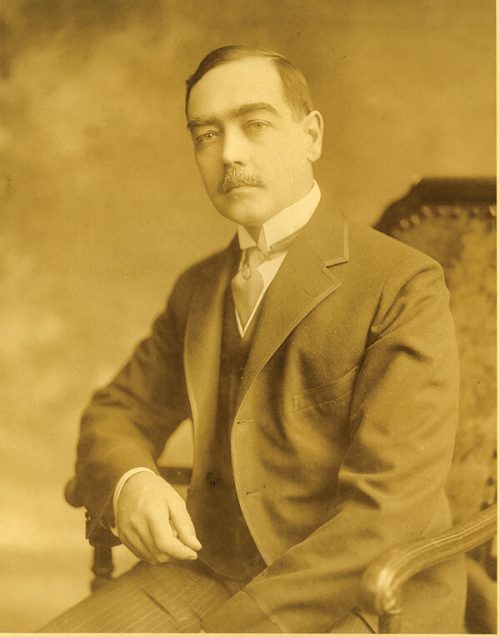
President Clippinger retires after 30 years. He was responsible for Otterbein’s first endowment and accreditation.
1941
The United States enters World War II. Approximately 500 Otterbein students, faculty, and alumni volunteered for, or were drafted into, service. Within a year, women outnumbered men on campus by a 4:1 ratio.
1942
In 1942, Otterbein welcomes Japanese-American students from internment camps to enroll.
1944
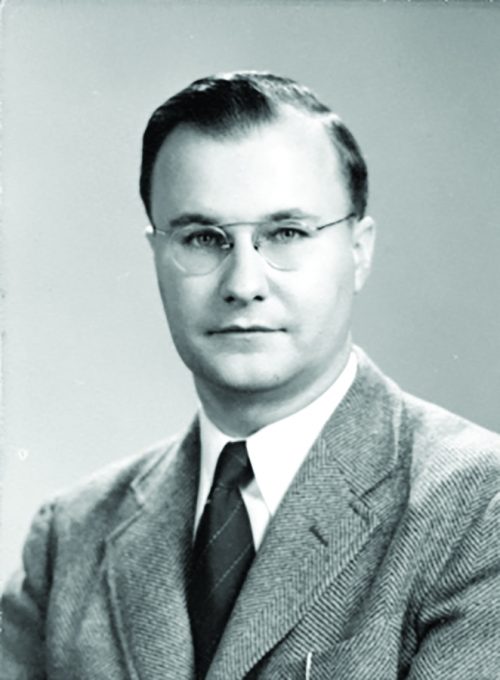
In 1944, Harold Hancock, known as “Mr. Otterbein” for his knowledge of Otterbein’s history, joins the faculty
1945 – 1965
1945
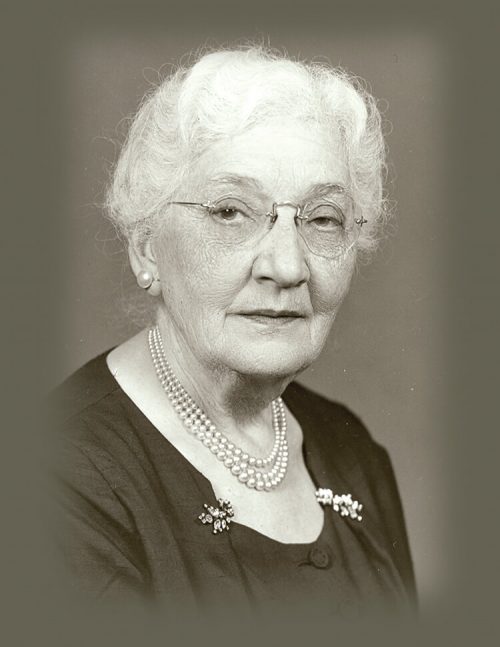
Vida Clements, class of 1901, is elected to Board of Trustees. One of Otterbein’s biggest benefactors, she later established the Clements Foundation in 1966.
1946
Returning WWII veterans lift Otterbein to a championship football season and spearhead the drive for a new stadium.
1947
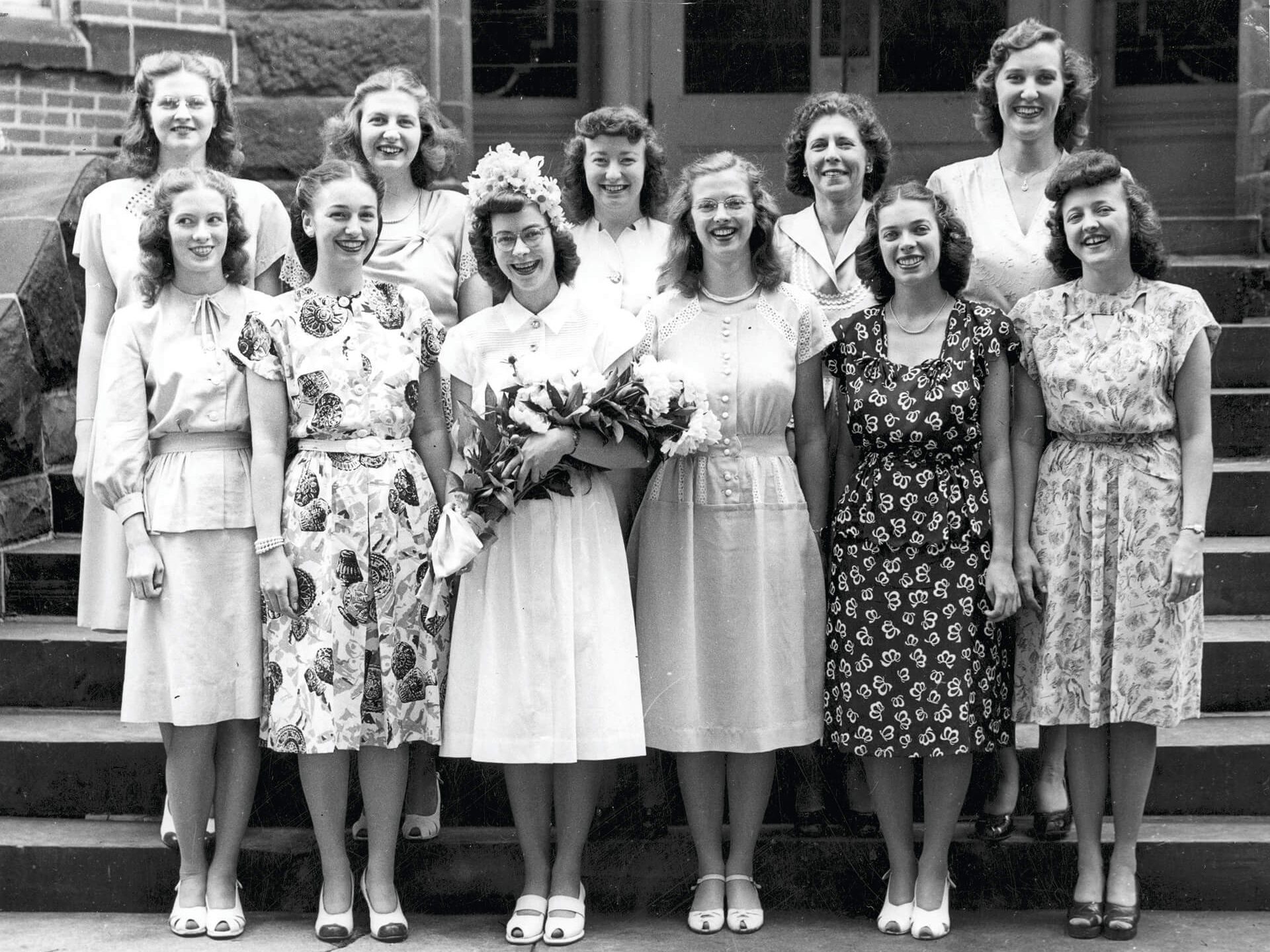
OTTERBEIN’S 100TH ANNIVERSARY IS CELEBRATED WITH A CAMPAIGN RAISING $640,000.
1948
In 1948, WOBC 630 AM (later WOBN) begins broadcasting music and news from campus.
1948
Joanne Van Sant “Dean Van” joins the faculty, eventually becoming dean of students and vice president for student affairs.
1955
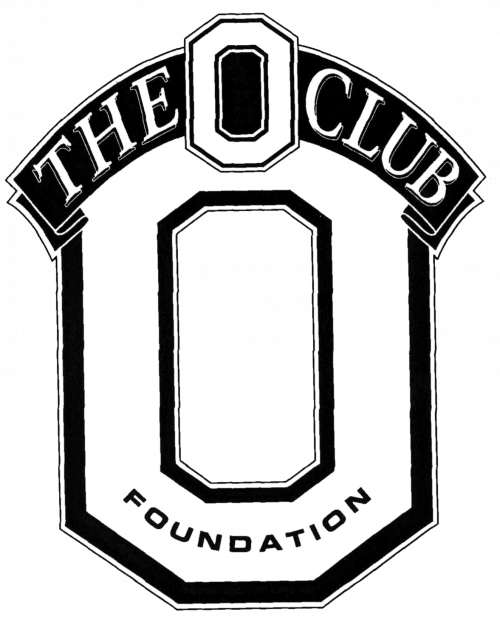
THE “O” CLUB IS FOUNDED.
1963
President Kennedy is assassinated.
1964
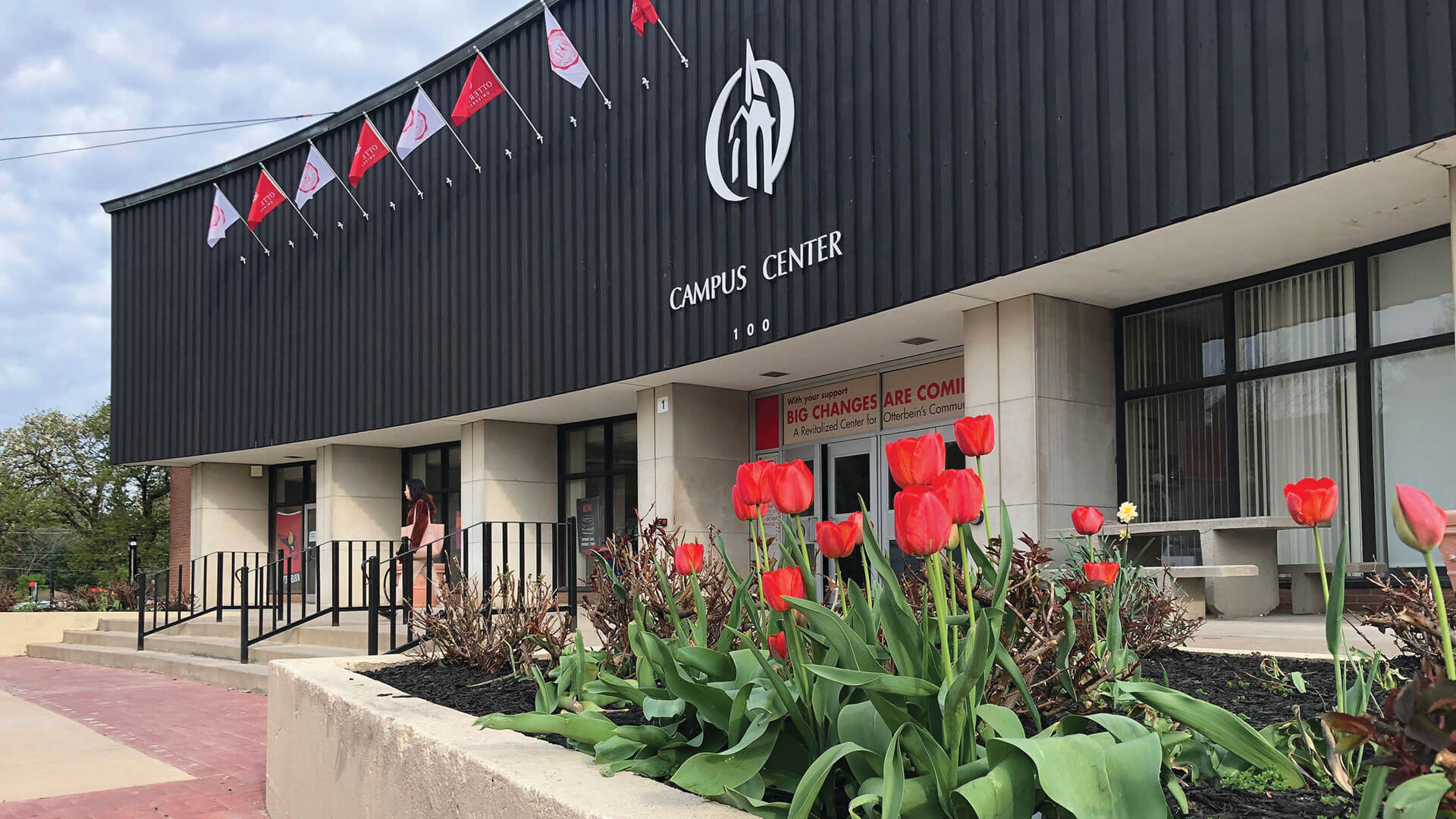
CAMPUS CENTER OPENS.
1964
Vietnam War begins.
The Civil Rights Act of 1964 is passed
1965
The Voting Rights Act of 1965 is passed.
1966 – 1989
1968
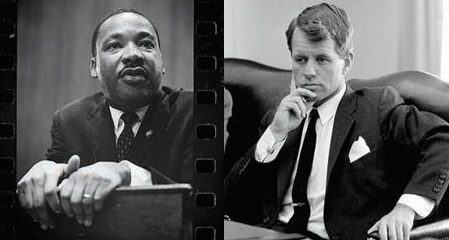
Martin Luther King Jr. and Robert Kennedy are assassinated.
1969
First Black student group, SOUL, is formed on campus. The African American Student Union formed in 1989 and is still active today
1969
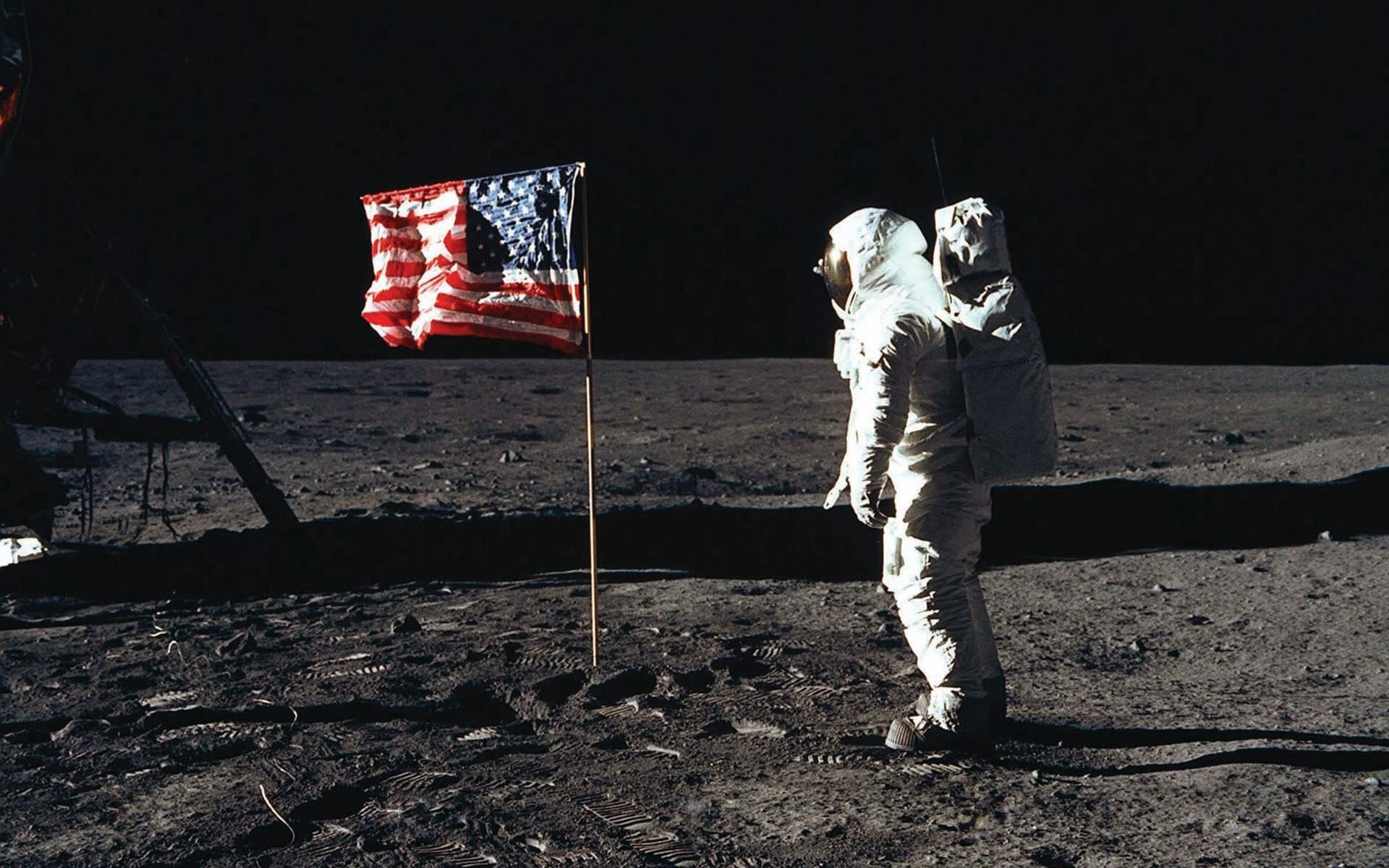
Moon Landing.
1970
OTTERBEIN BECOMES THE FIRST COLLEGE TO ELECT STUDENTS AND FACULTY TO THE BOARD OF TRUSTEES.
1970
In 1970, four students are killed at Kent State University by Ohio National Guard troops. The tragedy forced the closure of many college campuses due to student unrest; Otterbein did not close.
1972
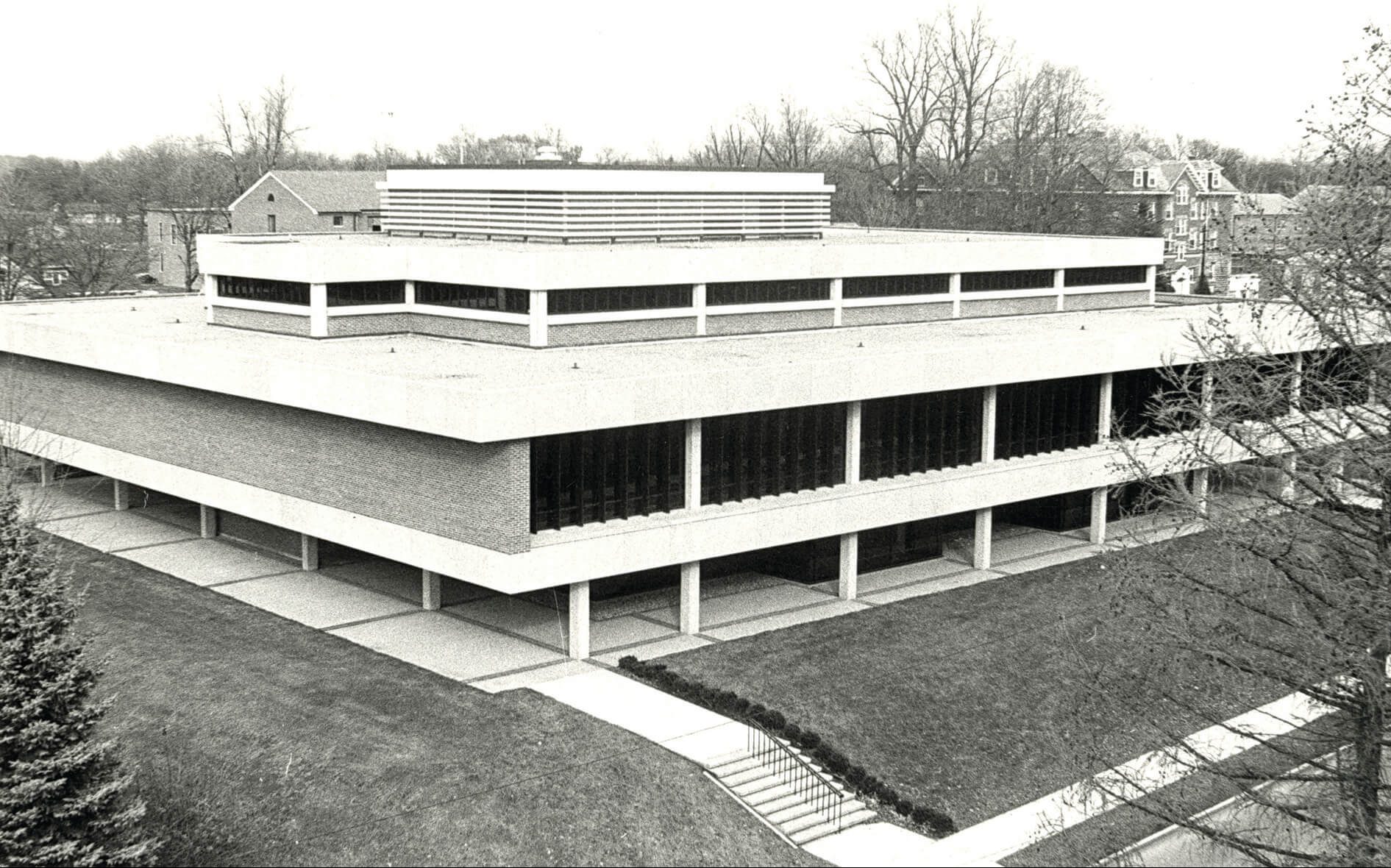
Courtright Memorial Library opens.
It was named in 1979 through the generosity of A. Monroe Courtright, to honor his parents Robert and Ada.
1974
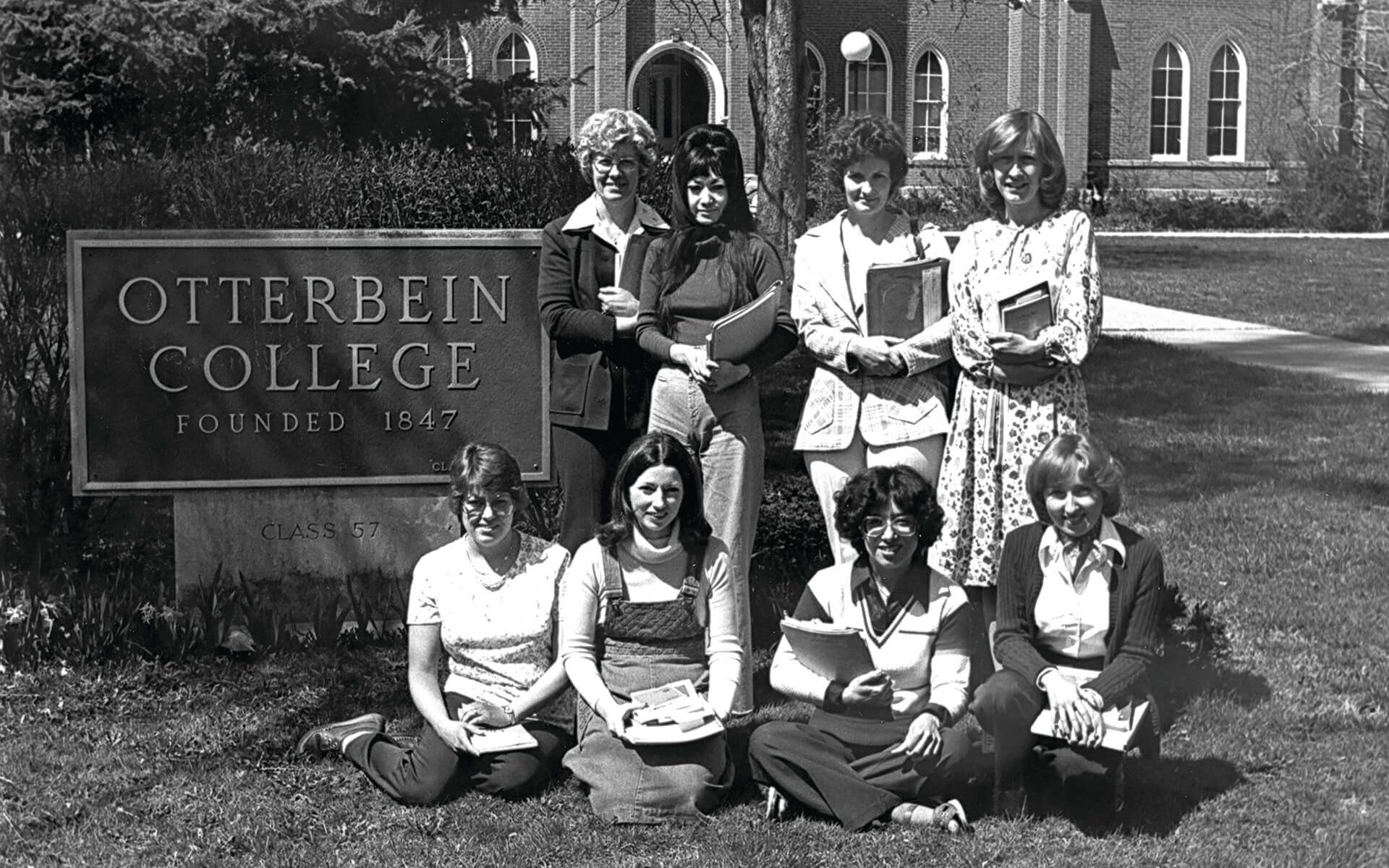
In 1974, the first adult degree program is launched. Enrollment of adult students peaks at 899 in 1999.
1974
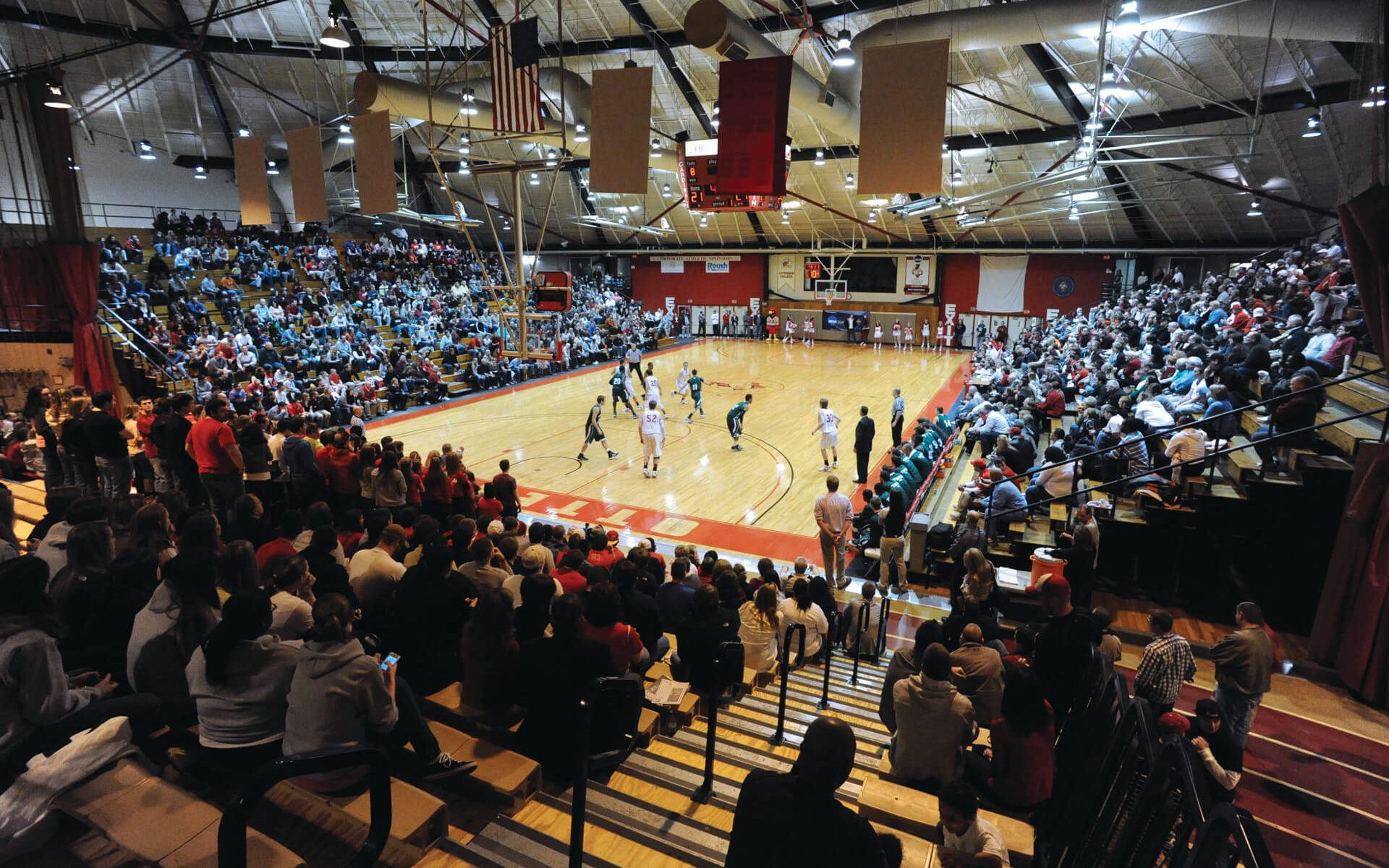
Rike Center opens.
1986
Space shuttle Challenger tragedy
1989
OTTERBEIN OFFERS GRADUATE EDUCATION OPPORTUNITIES.
1993

BiGALA, the first LGTBQIA+ student organization, is recognized by the University.
1990 – 1999
1993

BiGALA, the first LGTBQIA+ student organization, is recognized by the University.
1995
Senior Year Experience is established.
1995

The Common Book Program is established through support of Mary B. Thomas ’28.
1996

Otterbein’s first website goes live.
1997

OTTERBEIN’S 150TH ANNIVERSARY.
1998
Liquor returns to Westerville.
2000 – 2009
2001
The September 11 terrorist attacks kill nearly 3,000 people.
2002
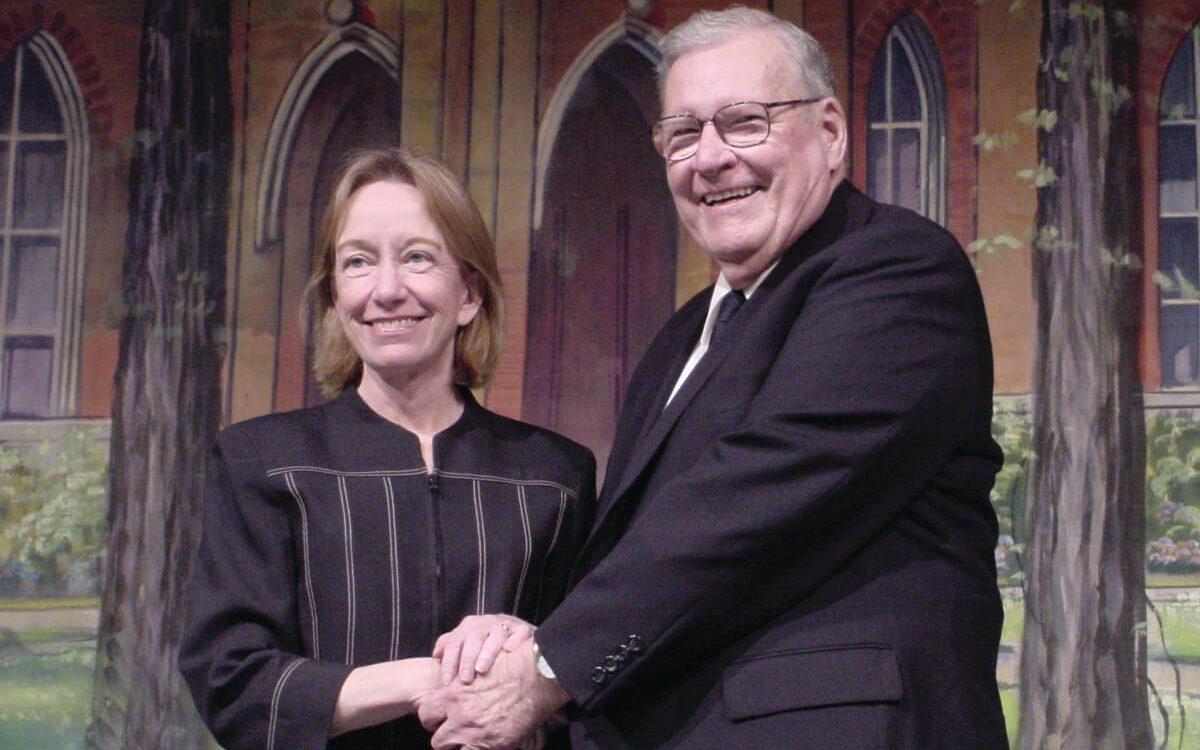
VERNON L. PACK ’50 DISTINGUISHED LECTURE AND SCHOLAR-IN-RESIDENCE SERIES BEGINS.
2002
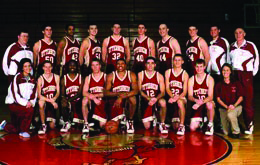
Otterbein wins NCAA DIII Basketball Championship.
2006
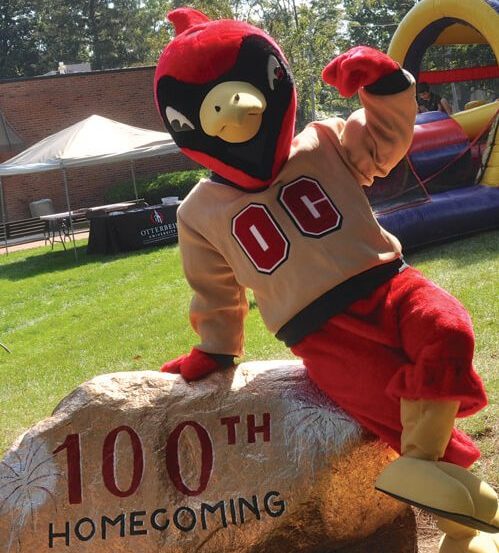
The Otterbein Cardinal mascot is officially named Cardy.
2007
“West” campus opens with the move of the Art and Communication departments to 33 Collegeview Ave. in 2007.
2007
Otterbein is one of four universities in the nation to receive the Presidential Award for Volunteer Service.
2008
BARACK OBAMA BECOMES AMERICA’S FIRST BLACK PRESIDENT.
2009
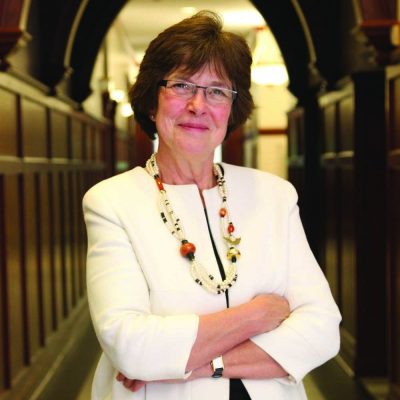
In 2009, Kathy Krendl is named the 20th and the first female president of Otterbein University.
2010 – 2021
2010
In 2010, Otterbein College becomes Otterbein University again.
2011
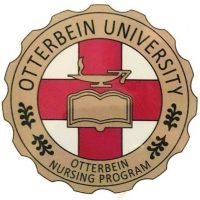
First 10 students enroll in Otterbein’s Doctor of Nursing Practice Program — the first doctorate degree program at Otterbein since 1895.
2016

The Point at Otterbein, a first-of-itskind innovation center, brings education, businesses, and the community together.
2018
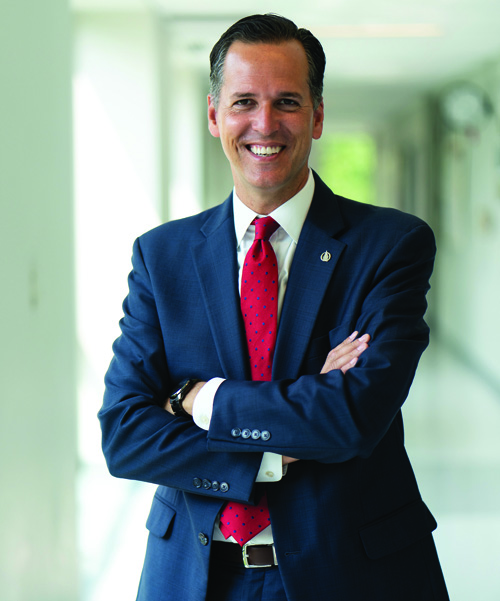
John Comerford becomes the 21st president of Otterbein University.
2019
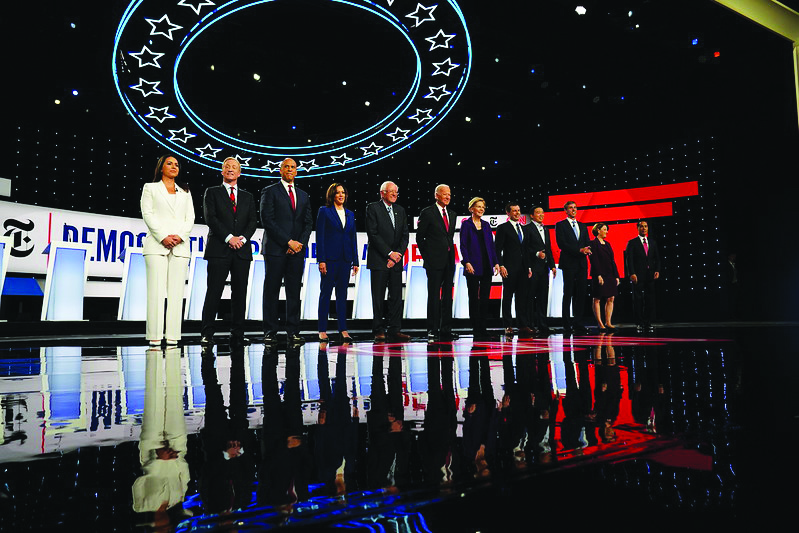
Otterbein hosts a Democratic presidential debate in a transformed Rike Center. The debate is broadcast worldwide on CNN.
2020

The Covid-19 pandemic forces campuses around the nation to move to remote learning and send students home during spring semester. By fall of 2020, Otterbein offered one-third of classes in person, one-third in a hybrid format, and one-third online. Fall, winter, and spring athletics seasons were held simultaneously in spring 2021.
2022
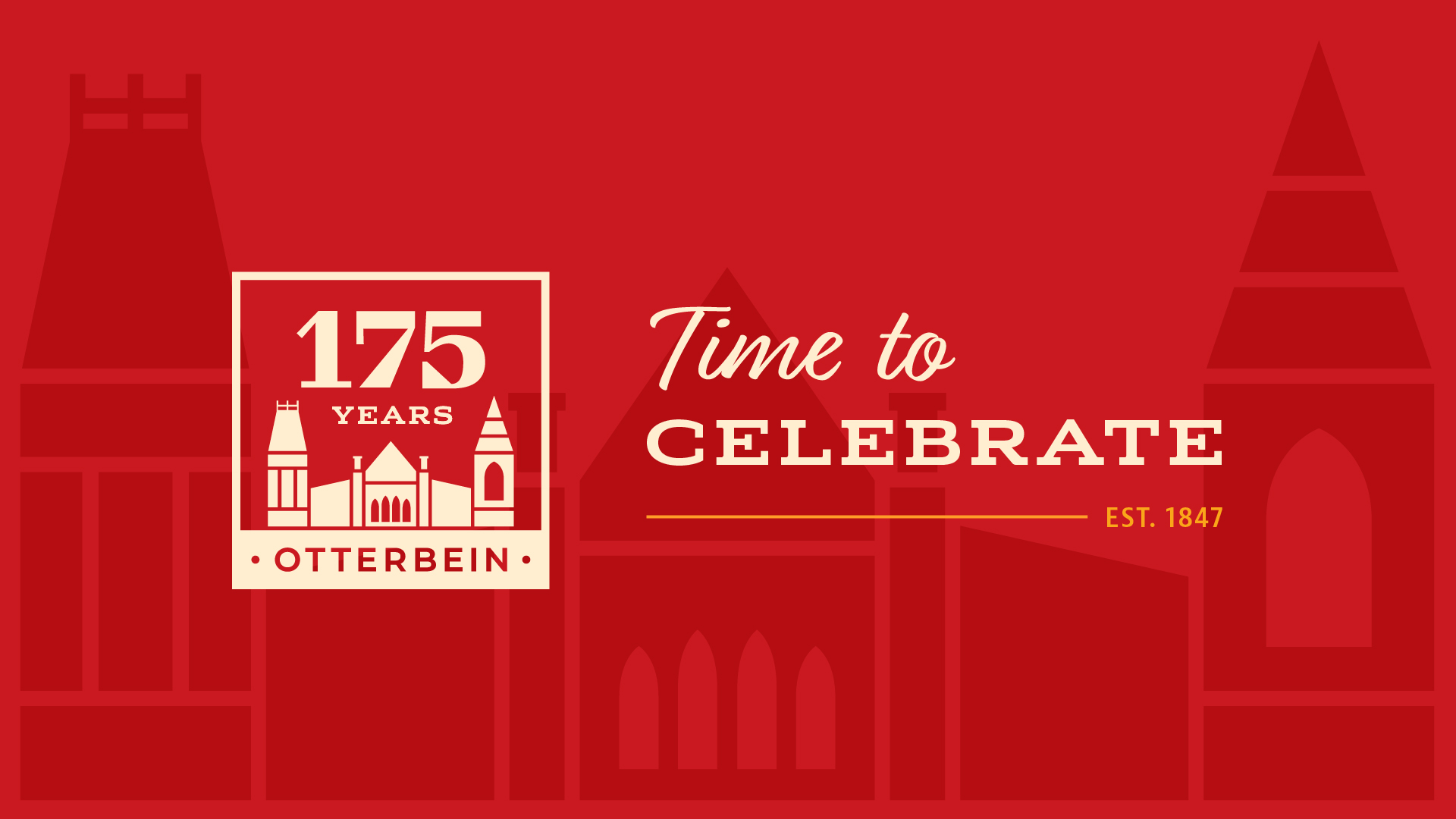
OTTERBEIN’S 175TH ANNIVERSARY.
